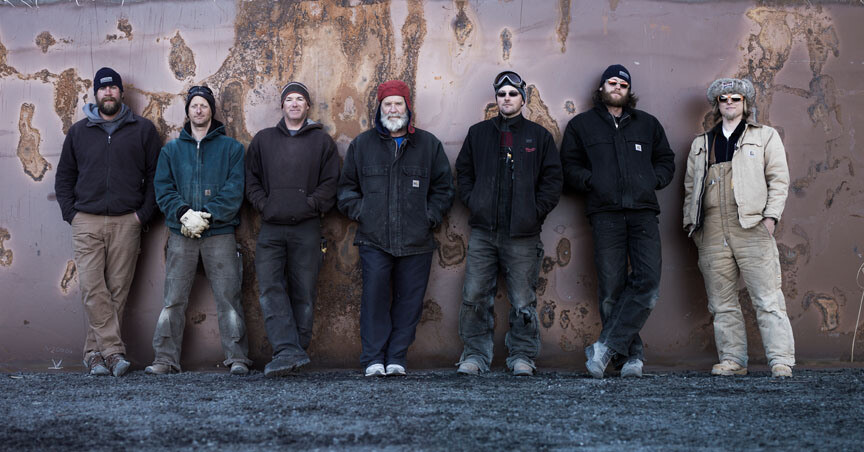
UNL will send a team of drillers to Antarctica in the 2013-14 season after all, albeit with the team reduced to five members and with plans to operate one drill instead of two.
Original plans called for a team of eight drillers to travel to Antarctica to operate a new roving hot-water drill and the drill from the history-making WISSARD hot-water drill that was deployed in the Lake Whillans project during the 2012-13 season and stored on a snow berm at its remote site near the southwestern edge of the Ross Ice Shelf. Now, however, the UNL drillers will operate only the roving drill while the WISSARD drill remains in cold storage.
The 16-day shutdown of the federal government at the start of October threw a wrench in the plans of the drills’ operator, the Antarctic Geologic Drilling (ANDRILL) Science Management Office at UNL, and all the other organizations and institutions planning research projects in Antarctica this year. When the government reopened on Oct. 17, what followed was nearly two weeks of juggling the already complicated logistics of sending scientists, support staff and equipment to the ice by the National Science Foundation’s Division of Polar Programs and Lockheed-Martin, the NSF’s Antarctic support contractor.
“Once the decision to restart the season was made, what the National Science Foundation and the Lockheed-Martin Antarctic support contractor had to do was look at each project in terms of where it fit in the timeline, and how logistically intense it was, and determine what were all the different aspects that had to be evaluated to determine if it was still feasible or not,” said Frank Rack, executive director of the ANDRILL Science Management Office.
The more flexible roving drill was given the go-ahead, Rack said, while the WISSARD drill, which requires significantly more logistical support in terms of equipment and crew, was put on hold. Still, Rack said, it’s a relief to be moving ahead, even at a reduced level.
“The opportunity to go was first and foremost in our minds throughout the process and we just hoped the government shutdown ended soon enough that we could get the season back on track,” he said.
The UNL drillers – Dennis Duling, Daren Blythe, Chad Carpenter, Dar Gibson and Graham Roberts – are scheduled to leave Lincoln on or about Nov. 13 and arrive at McMurdo Station in Antarctica by Nov. 18. They’ll complete the assembly of the drill at McMurdo and place it on the South Pole traverse’s train of tractor-pulled sleds around Dec. 30. The traverse will drop the drill off in the region of Subglacial Lake Whillans and the UNL team will fly out to meet it in second week of January. The drillers will use the roving drill to drill 10-centimeter diameter holes into the ice at sites separated by about 50 kilometers, with two holes separated by a few kilometers at each site. A team of scientists from the University of California, Santa Cruz, will use the holes to deploy an array of scientific instruments to study the movement of the Whillans ice stream over the bedrock below as it moves a few meters a day toward the Ross Sea.
The drillers will return to McMurdo at the end of January and leave McMurdo in early February after a drilling season that will be nearly a month shorter than originally planned. Rack said that should still be enough time to accomplish what they hoped with the roving drill, however.
Rack said the drillers will also inspect the WISSARD drill and may use some of the equipment stored there, in addition to transporting some equipment back to McMurdo at the end of the season. He said an assessment will be made after the season about the potential long-term effects of the decision not to deploy the WISSARD drill in 2013-14.
WISSARD is a multidisciplinary research project funded by the National Science Foundation, Directorate for Geosciences, Division of Polar Programs, Section for Antarctic Sciences. The development and operations of the hot water drill system for the WISSARD Project is the responsibility of the ANDRILL Science Management Office at UNL.
Funding for the drill system development, as part of the overall WISSARD Project, has been provided to the Science Management Office at UNL through three sub-awards: (1) Lake Ice Stream Subglacial Access Research Drilling (LISSARD), based at the University of California-Santa Cruz (UCSC, NSF-GEO-PLR-ANT #0839142); (2) Robotic Access to Grounding-zones for Exploration and Science (RAGES) based at Northern Illinois University (NSF-GEO-PLR-ANT #0839107), and (3) Geomicrobiology of Antarctic Subglacial Environments (GBASE) based at Montana State University (NSF-GEO-PLR-ANT #0838933). Any opinions, findings, conclusions or recommendations expressed in these materials are those of the authors and do not necessarily reflect the views of the National Science Foundation or the U.S. Antarctic Program.







